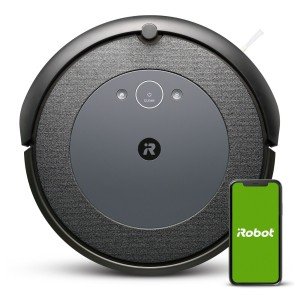10 Things We Love About Robot Hoover

The Evolution of Robot Hoovers: Revolutionizing Home Cleaning
Robot hoovers, also called robotic vacuum cleaners, have actually transformed how individuals approach household cleaning tasks. Initially presented in the late 1990s, these self-governing devices have progressed quickly due to advancements in technology, synthetic intelligence, and device learning. Today, they are geared up with a variety of features that make them highly reliable in keeping cleanliness in living spaces. This short article explores the history, working, benefits, and future of robot hoovers.
The History of Robot Hoovers
The principle of robotic vacuums go back to the 1970s, but it wasn't until the launch of the Roomba by iRobot in 2002 that they got traditional attention. The Roomba was designed to immediately browse various surface areas, preventing challenges while efficiently cleaning floors. Ever since, a number of considerable advancements have occurred, consisting of:
| Year | Development |
|---|---|
| 1996 | First prototype robotic vacuum cleaner established by a Japanese business. |
| 2002 | iRobot releases the Roomba, mass promoting robotic vacuums. |
| 2004 | Introduction of the first Roomba with a dirt detection sensor. |
| 2011 | Introduce of designs with wireless abilities and smartphone combination. |
| 2020 | Advanced designs including AI, boosted navigation systems, and mopping capabilities. |
How Robot Hoovers Work
Robot hoovers operate on a mix of sensors, video cameras, and algorithms that allow them to tidy efficiently. Key elements of these devices include:
Sensors:
- Obstacle Avoidance Sensors: Detect walls, furnishings, and even stairs, avoiding collisions and falls.
- Dirt Detection Sensors: Identify locations that need more thorough cleaning.
Navigation:
- Gyroscopes: Help identify the robot's orientation and motion.
- Cams and Lidar: Enable mapping of the home environment to create optimal cleaning courses.
Cleaning Mechanisms:
- Vacuum Motors: Generate suction to get dirt and particles.
- Brush Rollers: Agitate dirt out of carpets for much deeper cleaning.
Power Supply:
- Batteries: Rechargeable lithium-ion batteries provide the essential power for extended cleaning cycles.
User Interface:
- Mobile Apps and Smart Home Integration: Users can arrange cleansings, display efficiency, and manage the robot remotely.
Advantages of Robot Hoovers
Robot hoovers provide various benefits, making them an enticing choice for modern households:
- Time-Saving: Automated cleaning allows users to concentrate on other jobs while the robot efficiently cleans up floorings.
- Convenience: Many designs can be scheduled for cleaning sessions, guaranteeing that homes stay neat without manual effort.
- Ease of access: Ideal for individuals with movement obstacles or busy lifestyles, making it possible for easier home upkeep.
- Consistent Cleaning: Regular, automated cleansings reduce the accumulation of dirt and allergens, contributing to a much healthier living environment.
- Smart Technology: Integration with smart home systems permits increased control and personalization.
Limitations of Robot Hoovers
Despite their advantages, robot hoovers include particular restrictions:
- Navigation Challenges: They might have a hard time in messy spaces or with certain floor types such as high-pile carpets.
- Battery Life: Most models need regular charging, which can restrict cleaning duration.
- Upkeep: Regular cleaning of filters, brushes, and emptying dust bins is necessary for optimum efficiency.
- Price: Advanced designs can be pricey compared to traditional vacuum cleaners.
The Future of Robot Hoovers
As technology continues to progress, the future of robot hoovers looks appealing. Prepared for improvements consist of:
- Improved AI: Enhanced algorithms will permit much better things recognition and dynamic mapping of spaces.
- Hybrid Models: Integration of vacuuming and mopping abilities in one device will provide a comprehensive cleaning option.
- Increased Autonomy: Future models may navigate even the most complicated environments without human intervention.
- Sustainability: Battery innovation improvements will cause longer-lasting, more energy-efficient robots.
Frequently Asked Questions (FAQs)
1. Are robot Robot Vacuum Mops for family pet hair elimination?
Yes, lots of robot hoovers are particularly created to tackle family pet hair with effective suction and specialized brushes that minimize tangling.
2. How do robot hoovers browse around furnishings?
Robot hoovers utilize a combination of sensing units and cams to identify barriers, allowing them to browse around furnishings and avoid accidents.
3. Can robot hoovers clean carpets?
The majority of modern robot hoovers work on both difficult floors and carpets. It is advisable to check the specifications of individual models for particular performance.
4. Do robot hoovers require programming?
Many robot hoovers feature easy to use apps that allow owners to set schedules and customize cleaning choices, making programs simple.
5. How much do robot hoovers cost?
Costs for robot hoovers differ commonly, varying from ₤ 200 to around ₤ 1,500, depending upon functions and brand.
Robot hoovers have come a long method since their inception, offering an efficient and convenient cleaning service for modern homes. Their increasing capability and intelligence make them a practical choice for individuals seeking to simplify their cleaning routines. As innovation continues to advance, robot hoovers will likely become a lot more capable, offering extra functions that deal with the developing requirements of users. Their journey from novelty to requirement highlights a fundamental shift in how society approaches home upkeep, marking a considerable milestone in the intersection of technology and life.

